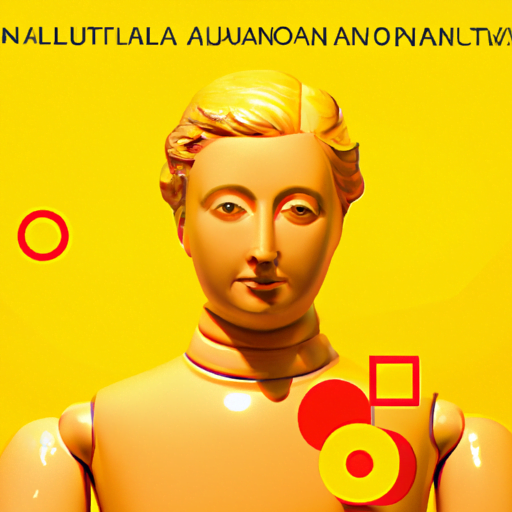
-
Table of Contents
Human-Centered AI Design: Balancing Automation and Personal Touch

Artificial Intelligence (AI) has become an integral part of our lives, revolutionizing various industries and transforming the way we interact with technology. From voice assistants like Siri and Alexa to recommendation algorithms on streaming platforms, AI has made our lives more convenient and efficient. However, as AI continues to advance, it is crucial to strike a balance between automation and maintaining a personal touch. This article explores the concept of human-centered AI design and the importance of finding the right equilibrium.
The Rise of AI in Everyday Life
AI has permeated various aspects of our daily routines, enhancing our experiences and simplifying complex tasks. For instance, AI-powered chatbots have revolutionized customer service by providing instant responses and personalized assistance. These chatbots can handle a wide range of queries, freeing up human agents to focus on more complex issues.
Moreover, AI algorithms have significantly improved recommendation systems, enabling platforms like Netflix and Amazon to suggest personalized content based on user preferences. This level of personalization enhances user satisfaction and increases engagement, leading to higher conversion rates and customer loyalty.
The Pitfalls of Over-Automation
While automation brings numerous benefits, there are potential pitfalls when it comes to over-reliance on AI. One of the main concerns is the loss of the human touch. As AI systems become more sophisticated, there is a risk of dehumanizing interactions and neglecting the emotional aspect of human communication.
For example, imagine a scenario where a customer is facing a complex issue and seeks assistance from a chatbot. While the chatbot may provide accurate information, it may lack empathy and fail to understand the customer’s frustration or emotions. This can lead to a negative customer experience and a sense of detachment from the brand.
Human-Centered AI Design
Human-centered AI design aims to address the limitations of over-automation by incorporating the human element into AI systems. It involves designing AI technologies that prioritize user needs, emotions, and values. By considering the human perspective, AI can enhance user experiences and build stronger connections.
One approach to human-centered AI design is to focus on augmenting human capabilities rather than replacing them. Instead of fully automating tasks, AI can assist humans in performing their jobs more efficiently. For example, in healthcare, AI can analyze medical data and provide recommendations to doctors, enabling them to make more informed decisions. This collaboration between humans and AI ensures that the personal touch and expertise of professionals are not compromised.
Case Studies: Striking the Right Balance
Several companies have successfully implemented human-centered AI design principles to strike the right balance between automation and personal touch. One notable example is the virtual assistant developed by a leading airline. The virtual assistant handles routine customer inquiries, such as flight status and baggage information, while seamlessly transferring complex issues to human agents. This approach ensures that customers receive quick responses while still having access to human assistance when needed.
Another case study is the use of AI in financial services. Many banks have implemented chatbots to handle customer queries and provide basic financial advice. However, these chatbots are designed to recognize when a customer requires human intervention. By seamlessly transferring the conversation to a human agent, banks can maintain a personal touch and address complex financial matters effectively.
The Importance of Ethical AI
When designing AI systems, it is crucial to prioritize ethics and transparency. AI should not only be efficient but also fair and unbiased. Biases in AI algorithms can perpetuate discrimination and reinforce existing societal inequalities. Therefore, it is essential to ensure that AI systems are trained on diverse datasets and regularly audited to identify and mitigate any biases.
Additionally, transparency is vital in building trust with users. AI systems should be transparent about their decision-making processes, allowing users to understand how and why certain recommendations or actions are made. This transparency helps users feel more in control and fosters a sense of trust in AI technologies.
Key Takeaways
- AI has become an integral part of our lives, enhancing convenience and efficiency.
- Over-automation can lead to a loss of the human touch and emotional connection.
- Human-centered AI design prioritizes user needs, emotions, and values.
- Augmenting human capabilities rather than replacing them is a key principle of human-centered AI design.
- Case studies demonstrate successful implementation of human-centered AI design principles.
- Ethical considerations, such as fairness and transparency, are crucial in AI design.
Conclusion
As AI continues to advance, finding the right balance between automation and personal touch becomes increasingly important. Human-centered AI design offers a solution by prioritizing user needs and emotions, augmenting human capabilities, and ensuring ethical considerations are met. By striking this balance, AI can enhance user experiences, build stronger connections, and create a future where technology and humanity coexist harmoniously.
